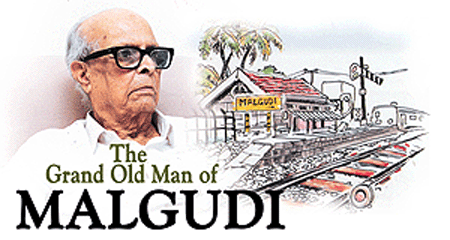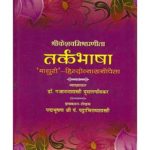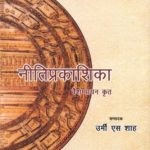
Rasipuram Krishnaswami Iyer Narayanaswami (1906-2001), the creator of Malgudi was one of India’s greatest storytellers and thinkers. Writing under the shortened name R. K. Narayan, a small sample of his works include Swami and Friends, Bachelor of Arts, Guide, and Gods, Demons, and Others. His equally illustrious brother Rasipuram Krishnaswami Iyer Laxman (RK Laxman) brought Malgudi to life with his magical illustrations. The siblings were recipients of the Padma Vibhushan, India’s second highest civilian honor. The popular 1980s TV series Malgudi Days, directed by the great Kannada artist Shankar Nag was based on the works of RK Narayan, and the 1965 Hindi movie Guide, a favorite of Indian Prime Minister Narendra Modi, was based on his book.
https://youtu.be/aEjfHV0YbII
The Financial Expert
RK Narayan’s 1951 work ‘The Financial Expert‘ [1] is universally regarded as a classic, and has been the subject of several excellent reviews from a western literary perspective, by both Indian and western writers. The book was made into a successful Kannada movie ‘Banker Margayya’ starring actor Lokesh in 1983, which went on to win multiple awards.

Here, we explore some of the themes in this WW2-era Malgudi story using an Indic perspective, and in doing so, are rewarded with insights that would not be obtainable using a purely western lens. In particular, we discover that the timeless lessons in Neeti and Dharma that used to be orally transmitted from generation to generation in India are embedded within the ‘Financial Expert’.
Margayya
In ‘Financial Expert’, RK Narayan brilliantly encodes in simple English the sophisticated nuance and wisdom of Indian Itihasa and Purana, even as he unravels the multiple threads of thought running through Margayya’s mind. Margayya, like many a character in itihasa, undergoes intense penance in order to acquire some special power. His aim is to please Goddess Lakshmi, so that she will bless him with wealth and financial success. The story of Margayya’s journey from 14D Vinayak Street to 10 Market Street and back is rich in the symbolism and subtle suggestion that characterizes Indian art.
Margayya was named Krishna at birth, and his professional name (pronounced ‘Marg-Ayya’) reminds us of Arjuna’s charioteer who showed the way (Marg) of Dharma in the Mahabharata. Margayya employed his financial Ganita prowess to game the system. He presented the peasants within a 100-mile radius of Malgudi a financial roadmap that enabled them to secure a endless sequence of cash loans from the Central Cooperative Land Mortgage Bank (est. 1914). The ‘Cooperative Bank’ part was an oxymoron as it neither co-operated with its poor shareholders, nor performed its banking duties with a sense of seva. Margayya, aged 42, made a living by aggressively filling this gap from his service location under a banyan tree right opposite the co-op, much to their irritation. Imagine a smarter Alan Greenspan in a topi, torn shirt, and brown dhoti.
Margayya wanted to progress beyond this tension-ridden low-end job. A tipping point is reached when the stained-dhoti clad financial jugaad master is humiliated by the rich, boorish bank secretary dressed in European attire, top to bottom. We can see in Margayya’s subsequent reactions, the self-loathing, and frustration, sense of inferiority, and confusion that infested many Indians in the 20th century. A transition of people who were progressively less grounded in the forest civilization [2] traditions of Dharma and harmony that India embraced during its prosperous history; a mindset increasingly attracted to a desert civilization’s zero-sum modes of survival and self-preservation that appeared more pragmatic in a once-flourishing land, but now looted and scorched by the British Raj, abounding only in scarcity.
Margayya’s Rise
Margayya’s natural entrepreneurial drive was in sync with the Vidura Neeti that promoted the virtue of self-employment. His mind constantly tinkered with ideas for startups. He wanted to secure the financial future of his wife Meenakshi, and son, Balu. When Margayya witnessed impoverished townspeople using an unclaimed corpse to extract small-change from passersby for a funeral (and booze), and when he observes people risking life and limb to earn a few paise, he is struck by the power of money. “People did anything for money. Money was men’s greatest need, like air or food…Money alone is important in this world. Everything else will come to us naturally if we have money in our purse.“. Here, he appears to gain some intuition about Chanakya’s words (dharmasya moolam artha). Indeed, a prosperous and developed nation is best equipped to preserve and propagate Dharma and harmony, else the rule of the desert will reign. His goal from the day he quarrels with the co-op secretary is to reach the top of the wealth pyramid and through this wealth, acquire everything else. And right there, Margayya parted ways with Vidura and Chanakya and followed his own path and rules.
Like a Yogi, but for all the wrong reasons, Margayya constantly meditated on money and through this manthana emerged all kinds of discoveries. His analysis enabled him to delineate the subtle differences between money, riches, wealth, and fortune. Wealth, in particular, contained elements of transcendence as well as Jugaad. “Riches any hard-working fool could attain by some watchfulness, while acquiring wealth was an extraordinary specialized job. It came to persons who had on them the grace of the Goddess fully and who could use their wits“. If Ramanujan‘s amazing ganita results were achieved through the blessings of Lakshmi as Namagiri Amman in his dreams, Margayya’s self-serving schemes too (in his mind) were due to the blessings of Lakshmi. Through the mind of this ‘financial mystic’, we get to see the infinite recursive patterns hidden within ‘interest’.
“There was probably no other person in the whole country who had meditated so much on the question of interest. Margayya’s mind was full of it. Night and day he sat and brooded over it. The more he thought of it the more it seemed to him the greatest wonder of creation. It combined in it the mystery of birth and multiplication…Every rupee, Margayya felt, contained in it seed of another rupee and that seed in it another seed and so on and on to infinity. It was something like the firmament, endless stars and within each star an endless firmament and within each one further endless … It bordered on mystic perception. It gave him the feeling of being part of an infinite existence.”
Such was Margayya’s devotion to the process of managing interest rates and accumulating wealth, that he was even able to give up his old addiction to snuff so that he could pursue his ‘yoga’ on all four cylinders which would free him from all worldly wants. A side-effect of this one-track meditation is Margayya’s general cluelessness and disdain for topics unrelated to his money, and therein lie the seeds of his downfall.
Margayya’s Fall
Margayya failed in his Nara dharma [3] and did not understand that dharma is the most important of the Purusharthas [4]. As explained here, Chanakya wrote:

Margayya is never really happy throughout the story. He obtains wealth and power, but is never able to conquer his senses, and always yields to moha, lobha, and krodha, which ultimately combine to ruin him.
Margayya has no use for the Dharma that accords to the elder brother the respected position of a second father [3], being far more interested in grabbing his share of the family property. He is quite sad that the Hindu Samaj prevented a complete takeover of the house and had to make do with a half-share (“he would willingly have seen his brother’s family perish without water by closing it to them, but public opinion prevented the exercise of his right.”).
He has no use for Saraswati and learning, which is dismissed as a derivative product that can be purchased on-demand (“‘A man with whom the Goddess of Wealth favours need not worry much. He can buy all the knowledge he requires.“. The dharmic concept of profitability, Shubh Labh, is rejected in favor of amassing wealth regardless of all consequences to others, to his family, and even to himself.
He has no qualms about misusing kama and rejecting dharma in order to hoard wealth and acquire power. Moha blinds his eye like a Dhritharashtra to his son’s faults, and in any case, he convinces himself that a single-minded pursuit of Artha is the key that unlocked all the doors in this world for himself and his family. Every minute of his life is invested in this material quest, and it begins to acquire almost a spiritual quality. In short, Margayya’s misunderstanding of the priorities and implications of the Purusharthas leads him astray. Grihasthashrama Dharma takes a back seat. Moral relativism and a materialist clamor for rights overrides duties, replacing Hinduism’s contextual Dharma ethics [2] at every decision making fork in Margayya’s life journey.
Ultimately, Margayya begins to make money by the sackful. The more he made, the more it consumed him, until this activity completely drained him of his capacity to think straight. In a momentary lapse of reason, the coldly calculative Margayya is replaced by an angry, panic-stricken father. He loses control of his senses and strikes out against Dr. Pal, the very instrument that brought him all the wealth, and in one stroke, Dr. Pal ensures that all those earnings are taken away. Without the firm guidance of Dharma, Margayya the path finder himself loses his bearings, and returns to square one, financially bankrupt. There is some recognition in the end by Margayya of what he lost in his obsessive pursuit and why. The readers get a story filled with lessons from Dharma traditions.
The book has several memorable characters, but for brevity, we’ll focus here on Margayya’s friend, Dr. Pal.
Dr. Pal, Social Scientist
First, a brief introduction to Dr. Havelock Ellis (1859-1939). He was a contemporary of Sigmund Freud (1856-1939). Unlike India, where Kama was always recognized as one of the Purusharthas and celebrated in poetry, song, dance, painting, and sculpture, the Europeans in Dr. Ellis’ time were repressed by the strictures of Victorian morality. Ellis boldly shattered several taboos although he was indifferent to the dharmic/adharmic impact of his work. He appears to have been a proponent of Eugenics and oddly okay with the Nazi sterilization program. Freud appears to have borrowed some ideas from Ellis for his psychoanalytical theories [5].
Dr. Pal is the instrument that befriends, makes, and finally breaks Margayya (It’s unclear how he became “Dr”). He is a journalist and an author and a sociologist who is influenced by Ellis’ work. Like India’s eminent journalists, authors, and social scientists today, Pal too is a scientific expert.
He mashed together Vatsyayana’s Kamasutra and Dr. Ellis’ liberating ideas to create a scientific cocktail and distilled this wisdom into an illustrated book titled ‘Bed Life’. Margayya here represents the mentally colonized and under informed native who is overawed by ‘modern science’ label that claims to enhances and elevates an ancient Indian treatise. Margayya’s Lobha overcomes his instinctive disgust for Dr. Pal’s work and he benefits immensely from the proceeds obtained by publishing this bestseller (renamed ‘Domestic Harmony’ to avoid legal scrutiny and obscenity lawsuits). Margayya’s growth is seeded by the ill-gotten gain obtained from this salacious ‘digestion’ of Kamasutra.
Long before Wendy Doniger invaded the sacred traditions of dharma [8], propagating Freudian pseudoscience and Hinduphobia, we have the duo of Dr. Havelock Ellis and Dr. Pal. It is remarkable how RK Narayan’s 1951 novel anticipates contemporary India where educated people flock to devour Wendy Doniger’s latest sleazy pulp fiction that tramples upon their own heritage and indigenous knowledge systems [9].
Regardless of whether one agrees with his lawsuit, it's a fact that neither Batra nor Monika Arora demanded the "pulping" of Doniger's book. pic.twitter.com/gy9az1uwRF
— चेदिराड्रिपुपार्षदः 🟩⬜️⬛️ (@Saatvata) January 26, 2017
Dr. Pal is the western-influenced free-thinking rebel for whom ‘anything goes’. Later, he brings to Margayya the steady supply of clientele required to sustain the latter’s Ponzi scheme. Dr. Pal is a double-edged weapon that Margayya tries to control. Despite Margayya’s best attempts to keep Dr. Pal away from his family, his corrosive influence begins to consume Margayya’s married son, and drives him to debauchery. At this point, Margayya loses his composure and beats up Dr. Pal who hits back by completely ruining Margayya, thereby completing the karmic cycle.
Lighter Side: Margayya versus Modi
Margayya loved cash, and only cash. “‘What am I to do with property?’ he said. ‘I want only money, not brick and lime or mud,’ he reflected when he reconverted his attached property into cash. Margayya seems happy only when he is counting cash. “…. the moment he reached home, he counted the notes again, bundled them up in tidy little batches, the lovely five-rupee and ten-rupee and the most handsome piece of paper – the green hundred-rupee note” .

Per RBI records, the thousand rupee note was introduced in 1938, withdrawn prior to independence, and reintroduced in 1954 [6]. It is possible there wasn’t a significant percentage of high denomination notes (500/1000) in circulation during a time when these amounts were princely sums. Margayya’s Ponzi scheme attracted so many greedy and shady investors that nearby banks began to lose their deposits. However, no one in his office had any clue about his net worth. Margayya would’ve preferred higher denominations to hundred-rupee notes since he was running out of space for his cash stash at home (“there were currency bundles stacked up a foot high all over the floor.“). We’ve read in the newspapers how certain Indian co-op banks operate in present times, and why they’ve become a target for tax evasion investigators. Modi with his demonetization and push for a less-cash society could’ve badly dented both Margayya and the Malgudi co-op.
RK Narayan’s Writing
It is interesting to compare RK Narayan with Shashi Tharoor, another Indian writer whose English novels are popular. RK Narayan’s works are popular all over India for their relatively straightforward rendering and simple English, while Tharoor’s target audience appears to be the westernized elite in and outside India.
Maybe she's trying to learn English. I salute her spirit and am proud to contribute to her goal, despite your condescending elitist tone. https://t.co/MerK9HT557
— Chetan Bhagat (@chetan_bhagat) February 4, 2017
It is not surprising that Tharoor chose to focus on, and expressed contempt for Narayan’s simple English, and was frustrated by RK Narayan’s indifference to a language that colonized Indian minds. Mocking his English as a ‘translation’ is actually a compliment, because when I read RK Narayan, it is like reading a timeless story in my mother tongue about our civilization, people, and way of life. On the other hand, the well-written prose in Tharoor’s ‘Great Indian Novel’ based on the Mahabharata gives it kerb appeal, but cannot mask its alienating lack of authenticity.
Teach Ramayana, Mahabharata but not as religious texts.@ShashiTharoor.
Why?https://t.co/Jd4F3h1kq3— Sanatana (@GreatHeretic) February 19, 2017
A purely intellectual view of itihasa is reductionist and guaranteed to fall short. While Tharoor has spoken eloquently about India’s heritage and its wisdom, he remains confused about the differences between religion and Dharma, and intellectual versus the adhyatmic [2]. An entire generation of mentally colonized Indian writers in the last few decades, armed with excellent English, and indoctrinated in the Euro-centric humanities remains proudly clueless about the sacred art traditions of Bharatvarsha. Even if they wrote in an Indian language, it would still sound foreign. In contrast, RK Narayan as a child imbibed India’s Itihasa and Sanskriti from his grandmother. Perhaps it is this learning that is reflected in his stories.
There is no independent existence for, and artificial demarcation between, the secular/outer world and the sacred/inner realm in the ‘Financial Expert’. This reflects India’s unified view of reality. Preserving this integral approach [10] gives RK Narayan’s simple prose its powerful universal appeal. Injecting sophisticated western structures would actually interfere with, and diminish this impact. Just as Ananda Coomaraswamy noted in The Dance of Siva [7] that inserting western harmony in order to ‘enhance’ a sangeetam recital would be unnecessary and detrimental. Indeed, this integral perspective indicates that RK Narayan’s writings are part of a long, unbroken artistic tradition that follows the Natya Sastra (itself rooted in the four Vedas).
Bharata’s Natya Sastra [12] is the most influential ancient exposition on dramaturgy, performing arts, and aesthetics in the world [2], which was accessible to all sections of the society without geographical or linguistic restrictions. Rajiv Malhotra notes (emphasis mine) that the Natya Sastra “treats ‘natya’ as the total art form, including representation, poetry, dance, music, make-up and indeed the whole world. It is an organic and integral view encompassing the Vedic rituals, Shaivite dance and music, and the epic tales. The eight traditional rasas (love, humour, heroism, wonder, anger, sorrow, disgust, and fear) mirror the real world and come together in pursuit of the ‘purusharthas’ (human goal).” One can find all traditional rasas within the pages of the ‘Financial Expert’. We will end with RK Narayan’s own words in his 1964 book Gods, Demons and Others [11], where he shares his views regarding literature. He emphatically affirms the integrally unified perspective of Natya Sastra over a synthesizing approach (emphasis mine):
“Everything is interrelated. Stories, scriptures, ethics, philosophy, grammar, astrology, astronomy, semantics, mysticism, and moral codes – each forms part and parcel for a total life and is indispensable for the attainment of a four-square understanding of existence.
Literature is not a branch of study to be placed in a separate compartment, for the edification only of scholars, but a comprehensive and artistic medium of expression to benefit the literate and the illiterate alike. A true literary composition should appeal in an infinite variety of ways; any set of stanzas of the Ramayana could be set to music and sung, narrated with dialogue and action, and treated as the finest drama, studied analytically for an understanding of the subtleties of language and grammar, or distilled finely to yield esoteric truths“.
The fundamental characteristic of Bharatiya culture is that it looks upon life as an integrated whole.
-Pandit Deendayal Upadhyaya pic.twitter.com/zbUKILUIKh— Dr. Mahesh Sharma (मोदी का परिवार) (@dr_maheshsharma) February 20, 2017
References
- ‘The Financial Expert’, R. K. Narayan. (Vintage International), Knopf Doubleday Publishing Group. Kindle Edition, 2012.
- ‘Being Different: An Indian Challenge to Western Universalism’, Rajiv Malhotra. Harper Collins, 2011.
- ‘Nara Dharma‘, N.R.I.Pathi, Indic Civilizational Portal. 2016.
- ‘The Purusharthas‘, N.R.I.Pathi, Indic Civilizational Portal. 2016.
- Havelock Ellis Wikipedia page
- RBI Monetary Museum, rbi.org.in.
- ‘Dance of Shiva: Essays by Ananda Coomaraswamy’, Dover Publications. 1985.
- ‘Invading The Sacred: An Analysis of Hinduism Studies in America’, Editors: Krishnan Ramaswamy, Antonio de Nicolas and Aditi Banerjee, Rupa & Co., Delhi. 2007.
- Hitchhiker’s Guide to ‘Invading the Sacred’, 2014.
- ‘How Sumitranandan Pant Rediscovered Dharma‘, 2013.
- ‘Gods, Demons, and Others’, R. K. Narayan. University Of Chicago Press. 1993.
- ‘Classical Indic Literature III: Dramatics‘, N.R.I.Pathi, Indic Civilizational Portal. 2016.
Acknowledgments Thanks to n.r.i.pathi for the valuable feedback.


